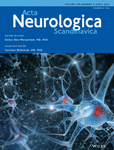BRIVA-LIFE–A multicenter retrospective study of the long-term use of brivaracetam in clinical practice
Abstract
Objectives
Evaluate long-term effectiveness and tolerability of brivaracetam in clinical practice in patients with focal epilepsy.
Materials and Methods
This was a multicenter retrospective study. Patients aged ≥16 years were started on brivaracetam from November 2016 to June 2017 and followed over 1 year. Data were obtained from medical records at 3, 6 and 12 months after treatment initiation for evaluation of safety- and seizure-related outcomes.
Results
A total of 575 patients were included in analyses; most had been treated with ≥4 lifetime antiepileptic drugs. Target dosage was achieved by 30.6% of patients on the first day. Analysis of primary variables at 12 months revealed that mean reduction in seizure frequency was 36.0%, 39.7% of patients were ≥50% responders and 17.5% were seizure-free. Seizure-freedom was achieved by 37.5% of patients aged ≥65 years. Incidence of adverse events (AEs) and psychiatric AEs (PAEs) was 39.8% and 14.3%, respectively, and discontinuation due to these was 8.9% and 3.7%, respectively. Somnolence, irritability, and dizziness were the most frequently reported AEs. At baseline, 228 (39.7%) patients were being treated with levetiracetam; most switched to brivaracetam (dose ratio 1:10-15). Among those who switched because of PAEs (n = 53), 9 (17%) reported PAEs on brivaracetam, and 3 (5.7%) discontinued because of PAEs. Tolerability was not highly affected among patients with learning disability or psychiatric comorbidity.
Conclusions
In a large population of patients with predominantly drug-resistant epilepsy, brivaracetam was effective and well-tolerated; no unexpected AEs occurred over 1 year, and the incidence of PAEs was lower compared with levetiracetam.
CONFLICT Of INTEREST
V Villanueva has participated in advisory boards and industry-sponsored symposia for Eisai, UCB Pharma, Bial, GSK, Esteve, Novartis, and GW Pharmaceuticals. FJ López-González has participated in advisory boards and industry-sponsored symposia for EISAI, UCB Pharma, Bial, Esteve, Novartis, and Livanov. JA Mauri has participated in advisory boards and industry-sponsored symposia for Eisai, UCB Pharma, Bial, GSK, and Esteve. J Rodriguez-Uranga has participated in advisory boards for UCB Pharma, Eisai, Bial, and Pfizer. J Zurita has participated in industry-sponsored symposia or received congress travel bursaries from Bial, UCB Pharma, Eisai and Esteve. M Olivé-Gadea, J Montoya and J Ruiz-Giménez have no conflict of interest to disclose. The study was funded by Universidad Francisco de Vitoria. Carretera de Pozuelo a Majadahonda, Km. 1,800; 28223 Pozuelo de Alarcón. Madrid, Spain (NIF-G-80480197).




